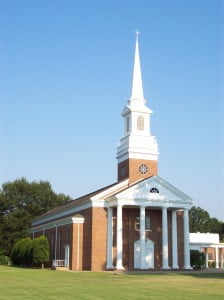
Foreclosure Crisis Destroying Thousands Of Churches
 Economists are finding the foreclosure crisis is spreading like a cancer into one of the most unlikely places, houses of worship. According to the Thomson Reuters Westlaw legal database, foreclosure proceedings against U.S. churches have nearly tripled since December 2007 and within the last year alone, more than 100 churches have filed bankruptcy in an effort to stop foreclosure . So what’s behind the sudden surge in church foreclosures and bankruptcy?
Economists are finding the foreclosure crisis is spreading like a cancer into one of the most unlikely places, houses of worship. According to the Thomson Reuters Westlaw legal database, foreclosure proceedings against U.S. churches have nearly tripled since December 2007 and within the last year alone, more than 100 churches have filed bankruptcy in an effort to stop foreclosure . So what’s behind the sudden surge in church foreclosures and bankruptcy?
During the housing and credit boom, churches were expanding and lenders saw them as an easy source of new revenue. Lending rules were lax and many churches were given loans that were large enough to help them build the mega buildings they desired but also large enough to send them into foreclosure if they experienced even the slightest financial hiccup. So when the bottom began to fall out of the financial nirvana we were all experiencing, churches were hit hard. Donations dried up and in some cases, membership declined because entire communities were forced out when the foreclosure crisis hit the residential market. The employment market dropped and families moved in search of greener pastures.
But if you thought that the lenders would treat churches and other religious establishments with a softer touch, then you’re wrong. The church foreclosure battleground has become even bloodier than the residential foreclosure crisis because lenders are not willing to walk away from defaulted loans even after a church has filed bankruptcy. Some lenders have even gone so far as to videotape the license plates of parishioners so they could prove to a bankruptcy trustee that the church had enough members that it could theoretically make a collection and pay their delinquent bills. That particular church’s bankruptcy was eventually dismissed. It is not clear if the church will survive in the long-term and it is not clear how many churches we will lose as this foreclosure crisis continues.

